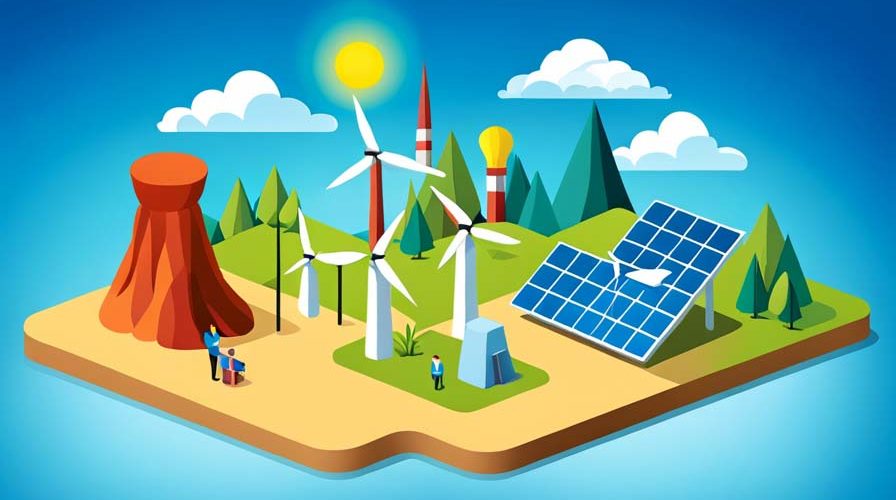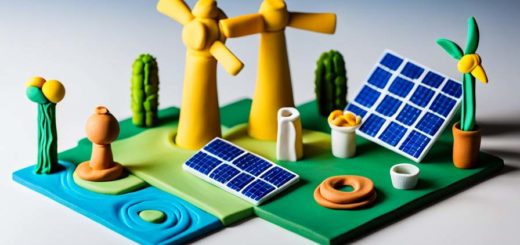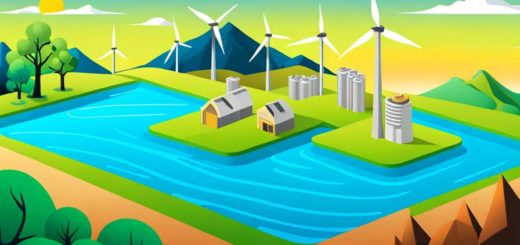Exploring Australia’s Alternative Energy Landscape

As an Australian, you’re likely aware of the country’s vast energy landscape and the importance of alternative energy sources. In recent years, the push for clean and eco-friendly energy solutions has grown stronger, as Australia works to meet its renewable energy targets and reduce its carbon footprint. In this article, we’ll explore the potential of various alternative energy sources in Australia, helping you understand the need for a shift towards a greener future.
Solar Energy
As mentioned earlier, solar energy is one of the most promising clean energy solutions in Australia, given our abundant sunshine. The use of solar panels and solar power has seen tremendous growth in recent years, making renewable energy more accessible to households and businesses alike.
Some advantages of solar energy include its sustainability, low operating costs, and the potential for energy independence. However, there are also some disadvantages, such as the initial investment costs and the intermittent nature of solar power due to weather conditions.
With the ongoing advancements in solar technology and increased awareness about the benefits of green energy, solar energy is set to play an increasingly vital role in Australia’s energy mix.
Wind Energy
Wind energy is another key player in Australia’s renewable energy landscape. As the country is blessed with vast open spaces and favourable wind conditions, wind turbines have become a common sight in rural and coastal areas.
Some of the advantages of wind energy include its minimal environmental impact, low operating costs, and the fact that it’s a renewable resource. However, disadvantages include the initial investment costs, the noise generated by wind turbines, and the potential impact on local wildlife.
Despite these challenges, wind power is quickly becoming a vital component of eco-friendly energy solutions in Australia, and its potential is only expected to grow in the coming years.
Hydro Energy
Hydro energy, or hydroelectric power, has long been a part of Australia’s energy mix. Harnessing the power of water through dams and other hydroelectric facilities, this renewable energy source has provided a reliable and sustainable option for electricity generation.
Some advantages of hydro energy include its reliability, low greenhouse gas emissions, and the ability to store energy for use during peak demand periods. However, there are also some disadvantages, such as the environmental impact of dams and the limited availability of suitable sites for hydroelectric projects.
Despite these challenges, hydro energy remains an essential part of Australia’s renewable energy portfolio and has the potential to contribute even more in the future.
Geothermal Energy
Geothermal energy is a lesser-known but promising alternative energy source in Australia. By tapping into the Earth’s natural heat stored in hot springs and other geothermal reservoirs, geothermal power can provide a stable and sustainable source of electricity.
Some advantages of geothermal energy include its low greenhouse gas emissions, its ability to provide a constant source of power, and the minimal land required for geothermal power plants. However, some disadvantages include the high initial investment costs, the limited availability of suitable sites, and the potential for local environmental impacts.
As Australia continues to explore its geothermal potential, this renewable energy source may play an increasingly important role in the country’s clean energy solutions mix.
Bioenergy
Bioenergy, which is derived from biomass and biofuels, is another alternative energy source gaining traction in Australia. By using organic waste and other renewable materials, bioenergy can provide a sustainable and eco-friendly way to generate electricity, heat, and transport fuels.
Some advantages of bioenergy include its versatility, its ability to utilise waste materials, and the potential for carbon neutrality. However, there are also some disadvantages, such as competition with food production, the potential for deforestation, and the need for significant land resources.
As Australia seeks to diversify its energy sources, bioenergy is likely to play an increasingly important role in the nation’s renewable energy landscape.
Future of Alternative Energy in Australia
With the Australian government’s commitment to a clean energy future and growing public awareness about the importance of transitioning to alternative energy sources, the prospects for renewable energy in Australia look promising.
Government initiatives and policies, such as the Renewable Energy Target and the Clean Energy Finance Corporation, aim to encourage the growth of renewable energy industries and facilitate the country’s transition to a low-carbon economy. Furthermore, with investment in Australia’s renewable energy industry on the rise, the sector is poised for significant growth in the coming years.
These developments, coupled with advancements in renewable energy technologies and the global push for net-zero emissions, indicate a bright future for alternative energy in Australia. As the country continues to shift towards green energy and embrace eco-friendly energy solutions, opportunities for investment and innovation in the sector are expected to grow.
Conclusion
As we’ve seen throughout this article, Australia has a diverse range of alternative energy sources available, each with its own set of advantages and disadvantages. From the more established sources, such as solar and wind energy, to the emerging potentials of geothermal and bioenergy, these renewable energy options can play a crucial role in powering Australia’s future.
With the ongoing support from government initiatives, increased investment, and growing public awareness, the future of alternative energy in Australia looks promising. As the nation continues its transition to a low-carbon economy, the importance of embracing alternative energy sources cannot be overstated.
By adopting and investing in renewable energy, Australia can reduce its reliance on fossil fuels, decrease greenhouse gas emissions, and contribute to a more sustainable future for generations to come. So, as an Aussie, it’s time to get behind the push for alternative energy and make a real difference for our beautiful country.



